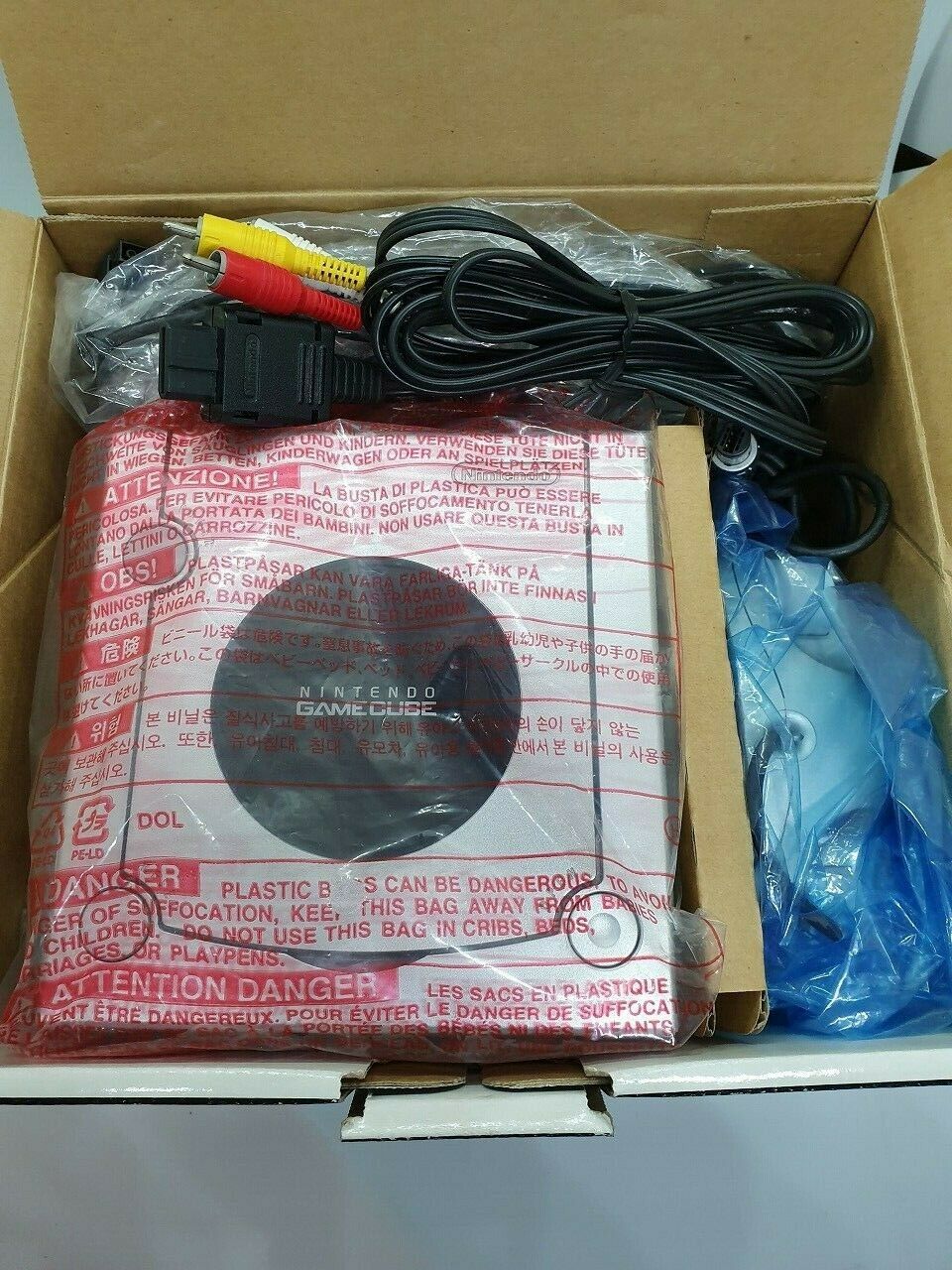Información
Nintendo GameCube
Descripción
Nintendo GameCube (ニンテンドーゲームキューブ Nintendō GēmuKyūbu?), también llamada simplemente GameCubey abreviada como GCN en América y NGC en Japón, es una de las consolas de sexta generación y fue fabricada por Nintendo. Es la sucesora de la Nintendo 64 y la predecesora de la Wii.
Sus principales características son su procesador central basado en un IBM PowerPC (tecnología previa utilizada en computadoras personales y portátiles), y su procesador gráfico desarrollado por ATI Technologies. Nintendo, por primera vez, prescinde del cartucho (ROM) como formato de almacenamiento, y adopta un formato óptico propio, el Nintendo Optical Disc. El nombre «GameCube» se debe a que el sistema tiene la forma parecida a la de un cubo. Es además la primera consola de Nintendo que no cuenta en su fecha de lanzamiento con un juego de Mario, mascota oficial de la casa.
La consola fue lanzada el 14 de septiembre de 2001 en Japón, el 18 de noviembre de 2001 en Norteamérica, el 3 de mayo de 2002 en Europa y el 17 de mayo de 2002 en Australia. Fue descontinuada el 28 de octubre de 2007 en Japón, el 17 de mayo de 2008 en Europa y el 15 de junio de 2009 en Estados Unidos.4 5
Según las cifras oficiales, la GameCube logró vender 21 740 000 unidades mundialmente.
Marca
Modelo
Fecha
Características técnicas
CPU
Arquitectura
ROM
RAM
VRAM
Gráficos
180 nm NEC eDRAM manufacturing process, 51 million transistors (approximately half dedicated to 1T-SRAM), 106 mm² die
Contains GPU, audio DSP, I/O controller and northbridge
3 MB of on-chip 1T-SRAM (2 MB Z-buffer/framebuffer + 1 MB texture cache) with ~18 GB/s total bandwidth
Embedded 24-bit Z-buffer/framebuffer RAM: 2 MB (4x 512 KB)
Bus width: 384-bit (4 buses, each 96-bit wide)
Bandwidth: 7.8 GB/s
Sustainable latency: Under 5 ns
Embedded texture cache: 1 MB (32x 256 Kb)
Bus width: 512-bit (32 buses, each 16-bit wide)
Bandwidth: 10.4 GB/s
Sustainable latency: Under 5 ns
24 MB (2x 12 MB) 1T-SRAM main memory @ 324 MHz, 64-bit bus, 2.6 GB/s bandwidth
1 vertex pipeline, 4 pixel pipelines with 1 texture mapping unit (TMU) each and 4 render output units (ROPs)
Simultaneous textures per pass: 4
Color depth: 24-bit RGB, 32-bit RGBA
System floating-point arithmetic capability: 11 GFLOPS[2] (peak) (MPU, Geometry Engine, Hardware Lighting Total)
Fillrate: 648 megapixels/sec, with Z-buffering, alpha blending, fogging, texture mapping, trilinear filtering, mipmapping and S3 Texture Compression[7]
Raw polygon performance: 90 million polygons/sec[8]
40 million polygons/sec, with fogging, Z-buffering, alpha blending and Gouraud shading[7]
33 million polygons/sec, with fogging, Z-buffering, alpha blending and texture mapping[7]
25 million polygons/sec, with fogging, Z-buffering, alpha blending, texture mapping and lighting[7]
6-20 million polygons/sec,[9] assuming actual game conditions, with complex models, fully textured, fully lit, etc.
16-stage TEV fixed-function texture combiner unit (4 inputs, 1 output)[1]
Image processing functions: Volumetric fog, heat haze, motion blur, bloom, subpixel anti-aliasing, per-vertex lighting, 8 hardware lights, alpha blending, hardware transform and lighting (T&L), virtual texture design, multi-texturing, emboss bump mapping, Dot3 bump mapping (normal mapping), lightmapping, shadow mapping, shadow volumes, planar projection shadows, environment mapping, mipmapping, LOD, depth of field, perspective-correct texture mapping, bilinear filtering, trilinear filtering, anisotropic filtering, real-time hardware texture decompression (S3TC) (6:1 ratio), 8 simultaneous texture layers, 256 levels of transparency, alpha blending, clipping, hidden surface removal/culling, Zfreeze, Zcomploc/early-Z reject, bounding box, destination alpha test, alpha test, depth test, render to texture, TEV compare, color combiners, alpha combiners, texture combiners, transparency effects, framebuffer effects, post-processing effects, Gouraud shading, cel shading, dithering, can emulate 1-bit stencil buffer through a Zfreeze function
Other: Real-time decompression of display list, hardware motion compensation capability, HW 3-line deflickering filter
Sonido
Sampling frequency: 48 kHz
64 simultaneous channels, ADPCM encoding
Instruction memory: 8 KB RAM, 8 KB ROM
Data memory: 8 KB RAM, 4 KB ROM
External audio RAM: 16 MB DRAM @ 81 MHz
Audio RAM bus: 8-bit
Audio RAM bus bandwidth: 81 MB/s[5]
CPU can read/write blocks from RAM to ARAM through DMA; ARAM can be used for miscellaneous low-bandwidth purposes[2]
Stereo output (may contain 5.1-channel surround via Dolby Pro Logic II)





